
Hailing from a mixed Mexican and American family, best-selling author Luis Alberto Urrea proclaimed, “In Mexico, we too are the melting pot.”
Urrea’s grandmother was named Guadalupe Murray. His uncle was called Carlos Hubbard. His mother was from Staten Island, and moved to Tijuana with his father, who hailed from Rosario, Sinaloa, and gave his son his blue eyes.
Urrea was the keynote speakers at Zócalo’s conference in Chicago, sponsored by the Carnegie Corporation, What Does Immigrant Integration Mean Now? Urrea began the afternoon’s discussions by elaborating on his family life and stories about the Mexican immigrant experience in the Midwest.
Keynote Speaker: Luis Alberto Urrea, “Humanity versus Legality”
The American experience, Urrea said, always eluded his father, despite valiant attempts: he would quiz his co-workers on five pages a week of the dictionary. “He would pace up and down, smoking Pall Mall cigarettes,” Urrea said, and he would ask for the definition of “un aardvark.”
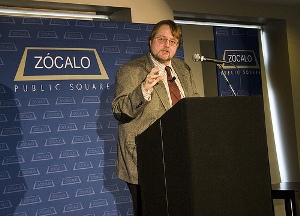 He gained from his parents a love of literature. His mom read Dickens and Twain to him when he was a young boy. “I didn’t really understand them, but I was really fascinated by the language,” he said. His father, too, loved literature but, Urrea joked, “believed everything good came from Mexico.” Urrea recalled that when his father brought home a Spanish-language version of Homer’s Odyssey, he said, “Luis, study it in the original Spanish.”
He gained from his parents a love of literature. His mom read Dickens and Twain to him when he was a young boy. “I didn’t really understand them, but I was really fascinated by the language,” he said. His father, too, loved literature but, Urrea joked, “believed everything good came from Mexico.” Urrea recalled that when his father brought home a Spanish-language version of Homer’s Odyssey, he said, “Luis, study it in the original Spanish.”
Urrea’s own love of literature eventually brought him to the Midwest by way of Massachusetts. “In a kind of miracle I was hired to teach expository writing at Harvard,” Urrea said, and at the time, he’d only seen Mexico, Southern California, and “maybe the Grand Canyon.”
An Aztec warrior
Years later Urrea would settle with his family in Naperville, a Chicago suburb. He was, he said, “the first Latino of any sort,” the only liberal, and the only writer. “People would come by and look at me and say, ‘Whoa, that’s the alien!” Urrea joked.
But Urrea did meet another Latino – Antonio, a busboy at a local diner patronized by locals, primarily conservative white businessmen, Urrea said. Antonio looked “like an Aztec warrior,” Urrea recalled, standing four-foot-two, wearing his hair in a ponytail, covered in tattoos of “demons, dragons, 666.”
Urrea befriended Antonio and learned his story. After coming to the U.S. to be in a rock band, Antonio began working at the diner, finding, Urrea said, that “being a heavy metal superstar isn’t easy when you’re undocumented and you arrive in Chicago.” He worked, sending money home to his parents, and paying for his brother’s wedding. Antonio soon found out he had throat cancer, and without insurance or money for surgery, his prospects were grim.
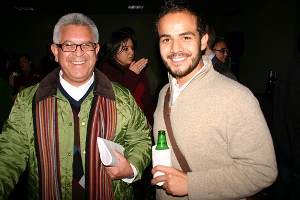 But when his customers learned of his plight, Urrea said, they decided to take up a collection for him. They ultimately paid for his treatment, Urrea said, “because they got to know him as a person, a hard-working good person. They forgot their agenda and responded to him as a human being.” Antonio explained to Urrea that he stays to work in the diner because he owes “service to the people who took care of me.”
But when his customers learned of his plight, Urrea said, they decided to take up a collection for him. They ultimately paid for his treatment, Urrea said, “because they got to know him as a person, a hard-working good person. They forgot their agenda and responded to him as a human being.” Antonio explained to Urrea that he stays to work in the diner because he owes “service to the people who took care of me.”
For salads
Urrea’s writing took him to the small town of Kankakee, Illinois, where he was invited to speak at the public library. When Urrea arrived, expecting a “little brick library with six or seven retired ladies with some cookies,” he found the library housed in an eight-story tower and its auditorium packed with 350 people, many of them speaking Spanish. The mayor attended and presented Urrea with the key to the city. “I told him I was going to make bling out of it and wear it on a chain because I’d never gotten a key to the city before,” Urrea said to a laugh.
At the end of Urrea’s talk, a young Mexican man stood up in the back of the hall and said he liked Urrea’s work “because now these people can see what we went through so they can eat salads.” Urrea said, “This ripple, this shock wave went through the audience,” and at the end of the question-and-answer session, everyone crowded around the man instead of around Urrea. “I thought, ‘To hell with the kid, I’m the author!’” Urrea joked.
Kankakee had faced difficult times, Urrea said, after losing its industrial jobs. When the HMO that once occupied the corporate tower sold it to the city, the mayor decided to transform it into City Hall and the library, which became a late-night sanctuary for kids. As the city’s population dropped, the mayor noticed that the undocumented population was rising, and they were coming from the same town.
Rather than enacting harsh measures against the immigrants, Urrea said, the mayor arranged to meet with the mayor of the Mexican city, and both began to seek ways to work together. The city of Kankakee created homeownership workshops, English classes, and other programs that encouraged immigrants to make their homes in the city.
An hour with Lou Dobbs
Despite programs and incidents like these, Urrea noted, it’s still difficult to focus on humanity over legality. The country’s emphasis on enforcement can be seen, Urrea said, in border patrol stations. Two that Urrea visited had both seen a tenfold increase in agents, whose greatest threat, one said, “was boredom.” The border seems “pretty much under control,” even as arms and drugs keep flowing.
But, he noted, agents sometimes have time to know immigrants better, and they have time to read – including Urrea’s books on the immigrant experience. “Communication and information leads to transformation,” Urrea said. “If only Lou Dobbs would give me an hour of explaining what Title VIII is and what immigration law is.”
—————————————————————————————————————
Watch the video of Urrea’s speech, “Humanity versus Legality” here, or a brief clip here.
Read our In The Green Room Q&A with Urrea here.
—————————————————————————————————————
Panel One: From Surviving to Belonging
 If there’s one thing that advocates on all sides of the immigration debate agree on, Tamar Jacoby explained, its integration.
If there’s one thing that advocates on all sides of the immigration debate agree on, Tamar Jacoby explained, its integration.
“Integration is one of those words that I think most people in our field feel pretty good about,” said Jacoby, president and CEO of ImmigrationWorks USA. “The complexity comes when you start to ask, what do they mean?”
Jacoby joined Gary Gerstle of Vanderbilt University, Associate Director of the National Alliance of Latin American & Caribbean Communities Jose Luis Gutierrez, and Duke University’s Noah Pickus to discuss the concept of integration, how the U.S. managed to absorb vast numbers of immigrants a century ago, and whether we can do it again today.
Functioning vs. belonging
Integration can mean many things, Jacoby noted, from opening a bank account to feeling at home, from the functional and objective to the emotional and subjective. The first step may be getting a job – or for the undocumented, getting legalization – but integration is “a complex, long-term process” that immigrants experience over years or even decades.
Political loyalties often dictate a particular understanding of integration, Jacoby said. Those on the left and center left focus more on the functional aspects – that immigrants integrate by gaining access to jobs, finance, housing, and the political process. Those on the right and center right – and sometimes the public at large – seek subjective measures: “Where do you feel at home? Where is your emotional attachment? Where are your loyalties?” Jacoby explained. The split has significant implications for immigration policy: should the U.S. aim to ascertain loyalties first, or provide access first, or both simultaneously? The right might be loathe to invest in, say English classes and job training, without a sense of immigrants’ loyalty to the new country. The left, alternately, might argue that immigrants won’t develop loyalty without being able to learn English and get steady work.
That’s part of the reason why integration policy should take into account that the functional and emotional aspects of integrating occur together and reinforce each other, Jacoby argued. She cited the example of Turkish immigrants in Germany who, despite having been guest workers for decades, were “all but barred from citizenship” until recently. “Surprise surprise, they don’t feel like they belong, and they haven’t done very well,” Jacoby said. She contrasted the Turkish with undocumented immigrants in the U.S. who were granted amnesty in 1986: “They felt they belonged, and it was safe to put down roots and invest in the place.”
Inclusion vs. exclusion
That sense of belonging is crucial, said Gerstle, a professor of American history. “How does belonging to America happen?” he asked. “We are a better nation if all the people who live in the U.S. – native born and immigrant alike – feel as though they belong.” Belonging, Gerstle suggested, requires a shared sense of community, a shared stake in the country, and a sense of rights and responsibilities and popular sovereignty.
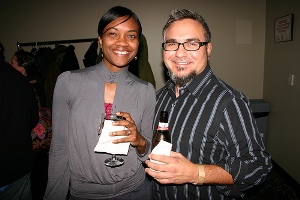 The U.S., Gerstle said, has been successful at creating a sense of belonging in the past. Seventy million immigrants have moved to the U.S. since the country’s founding. Half arrived by the 1920s, before the U.S. passed legislation restricting immigration, and the other half have come since immigration reform in 1965. And though the first 35 million did become deeply attached to the U.S., Gerstle said, the process was far from brief or conflict-free. Immigrants doubted they could belong, and the native-born emphasized exclusion. Immigrants were often only second-class citizens, or felt they had to lose parts of their culture to fit in (though the process of losing can be a natural one, as Pickus noted). Many were only accepted because they weren’t black, Pickus and Gerstle agreed. “An awful lot of Europeans became American by turning white, and visiting exclusion on those who were not white,” Gerstle said during Q&A.
The U.S., Gerstle said, has been successful at creating a sense of belonging in the past. Seventy million immigrants have moved to the U.S. since the country’s founding. Half arrived by the 1920s, before the U.S. passed legislation restricting immigration, and the other half have come since immigration reform in 1965. And though the first 35 million did become deeply attached to the U.S., Gerstle said, the process was far from brief or conflict-free. Immigrants doubted they could belong, and the native-born emphasized exclusion. Immigrants were often only second-class citizens, or felt they had to lose parts of their culture to fit in (though the process of losing can be a natural one, as Pickus noted). Many were only accepted because they weren’t black, Pickus and Gerstle agreed. “An awful lot of Europeans became American by turning white, and visiting exclusion on those who were not white,” Gerstle said during Q&A.
Immigrants could either acquiesce to their second-class status, or object and demand what Gerstle called “transformational incorporation.” Past waves of immigrants have accomplished this, Gerstle noted. Poor workers in the early decades of the last century “required that America commit itself to a New Deal,” thereby securing economic rights for themselves. Millions of Catholic and Jewish migrants to the country in the early 20th century insisted “that America could only really become their home if America came to be defined not as a Protestant land but as a Judeo-Christian land.” That we now think of the country as such, and that we’ve forgotten there was ever a battle, Gerstle said, has been a “profound transformation.” And just such a transformation is required if the U.S. wants to integrate its most recent immigrants – without it, he said, we lack “the sense of solidarity that allows societies to take on big things,” like major political and social reform.
Federal vs. local
Integrating recent immigrants is still a work in progress, said Gutierrez, noting that today’s immigrants have “a different culture, different perspective, different language, and different color.” Gutierrez, an immigrant himself, noted that he came to the U.S. without much money or knowledge of English. He worked seven days a week for his first five years in the country, and always planned to return to Mexico to start his own business. “Twenty-two years later, I’m here and I’m very proud to say that I love this country,” he said.
Gutierrez explained how much of the work of integrating immigrants has fallen on state and local governments, including Illinois, whose integration policies Gutierrez helped implement, and other states like Massachusetts and Maryland. Maintaining welcoming policies – like establishing welcome centers with easily available guidance on housing, banking, healthcare, English and more – becomes especially difficult during a budget crisis and in an election year, Gutierrez noted.
Another key step is to ensure that the native born have an opportunity to learn about immigrants as well, to participate in what Gutierrez called “this process of mutual integration.”
Coming together
Not only do the native born need to adjust, but they need to understand that dual loyalties are a reality, Pickus said. “We live in a transnational, global world with multiple attachments,” he said. “People have always had them, but it’s easier to keep them up now. It complicates the story.”
The country, and its policies, historically denied any possibility of such dual identities, Pickus noted, recalling Theodore Roosevelt’s proclamation that there is no room in the U.S. for hyphenated Americans. Stopping immigration for decades gave the country time to incorporate immigrants like those once called “the wild Irish,” Pickus said in Q&A. Today, in part because we’ve rightly stopped forcing Americanization, “there’s a lot of confusion.” Immigrants need help fitting in, and understanding that belonging is about, “a sense of a shared past and a shared future.” The native born aren’t sure what they should expect from immigrants, and what they should offer themselves. That is, Pickus explained, we’re not sure of our country’s “basic bargain” anymore.
This, Pickus argued, explains the “wild swings” in immigration policy: demands for instant immigrant rights versus demands for aggressive deportation. “In 1986, it’s one thing; in 1996, it’s another thing,” he said. Even today, the objective and subjective sides of integration policy are too divided, with many demanding loyalty up front without conveying rights, or vice versa. “We don’t get good policy that serves immigrants or Americans from those wild swings,” Pickus said. And good policy refers not just to immigration policy, but major social reforms. As Pickus put it, “Healthcare reform can’t be built on ‘because cosmopolitans like it. Americans have to be willing to commit to it.”
—————————————————————————————————————
Watch a video of the first panel, “From Surviving to Belonging” here, or a brief clip here.
Read In The Green Room Q&As with the panelists at the following links:
Tamar Jacoby, Gary Gerstle, Jose Luis Gutierrez, Noah Pickus
—————————————————————————————————————
Panel Two: Is Assimilation Still a Bad Word?
 As Tomás Jiménez explained, assimilation determines the major and minor decisions of life – and not just for immigrants. It’s “embedded in where we choose to live, decisions about where to go to school, romantic partners, the food we eat, the music we listen to, and the language we speak,” he said.
As Tomás Jiménez explained, assimilation determines the major and minor decisions of life – and not just for immigrants. It’s “embedded in where we choose to live, decisions about where to go to school, romantic partners, the food we eat, the music we listen to, and the language we speak,” he said.
Jiménez moderated a panel with USC’s Dowell Myers, Peggy Levitt of Wellesley College, and Richard Alba of SUNY Albany, discussing what assimilation is, how assimilated today’s immigrants are, and what the ideal picture of assimilation is.
What is assimilation?
The word “assimilation” has had a bad, or at least confused, reputation, Alba said: “Assimilation has been translated into a concept of coerced conformity.” That was the reality of assimilation until the early part of the 20th century; today, it’s a more complicated process, one that occurs as immigrants work to adjust to live in the U.S.
Assimilation is also not solely about submerging old identities, Alba said. It’s about expanding the mainstream, and making ethnicity less and less of a determinant of experience and opportunity. Myers agreed that assimilation – or the various other words we might substitute for it, like acculturation and absorption – is a “two-way street.”
Levitt noted that ethnic assimilation and religious assimilation can be different things, proceeding along different paths. “We’ve always allowed people to express religious difference much more easily than we’ve tolerated differences in race and ethnicity,” Levitt argued. This can determine the way immigrants choose to express their native identities: Italian immigrants to the U.S. became fervent Catholics, she said, because it was a way to be American and Italian.
Assimilation can also be difficult to comprehend because it is a fairly long process in time, complicated by a constant flow of newcomers. Where immigration is a new event, Myers explained, like in the South or in rural areas, the native born in those areas fear that immigrants aren’t assimilating. But the experience of old centers of immigration shows that the process can take decades: Latino immigrants to California are very poor when they arrive, but after 20 years in the country, more than half are homeowners. Children of immigrants all speak English fluently, and as Jiménez noted in Q&A, their experience is far less conflicted than previously imagined because there are so many of them. Language acquisition can occur in the first generation, Alba noted, adding however that assimilation is “not something in any sense we should expect to see accomplished in the immigrant generation.”
How has assimilation changed?
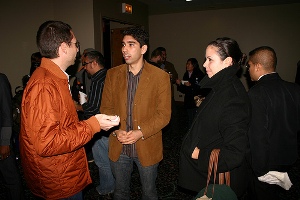 The concept of assimilation isn’t the only part of the immigration picture that has changed over the last century. Levitt noted that although there are some similarities between immigrants then and now – Italian immigrants sent remittances, for instance, and created an economic and political support network with their home country – there are many key differences.
The concept of assimilation isn’t the only part of the immigration picture that has changed over the last century. Levitt noted that although there are some similarities between immigrants then and now – Italian immigrants sent remittances, for instance, and created an economic and political support network with their home country – there are many key differences.
First and most obvious, today’s immigrants are different racially. The immigrant population also has more low-skilled non-English speakers, and also more very highly educated, prosperous migrants. Second, the American economy is different – rather than entering industrial or manufacturing jobs, today’s immigrants enter the high tech field or services. Third, immigrants move to new places, not just the gateway cities. Their spread means that more politicians care about immigration – sometimes to the detriment of reform, Myers noted. Fourth, the number of immigrants is significantly higher, and the number of immigrants who maintain ties to their home countries – aided by new technologies – is higher as well. And fifth, sending countries maintain closer ties to their immigrants, and remittances are a much more crucial part of their economies. El Salvador’s remittances make up nearly one-fifth of its GDP, for instance. Ninety-one countries allow their expatriates to vote; 86 offer dual citizenship.
Jiménez noted that in the early part of the last century, there was also no concept of an illegal immigrant. Unless an immigrant hailed from an Asian country or had a communicable disease (about two percent did), he or she was allowed to enter. Even those who were considered illegal – it happened toward the end of the period of mass migration from Europe – were treated leniently, Alba said. Alba and Myers agreed that illegal status is harmful to the process of assimilation; even being the native-born child of undocumented parents has been shown to have a negative impact on achievement. Legislation to give undocumented children aid for college, Alba noted during Q&A, is being held up in Congress by supporters of immigration reform, who want a comprehensive package passed even if it requires hindering the education of undocumented students in the meantime.
A particularly noteworthy difference, Alba and Myers emphasized, is the demography of the Western world. Previously, the U.S. was absorbing Europe’s overflowing population. Now, Myers said, Europe is shrinking, and the continent needs immigrant labor. Similarly, as baby boomers retire in the U.S., the country will need workers to care for them and to take their jobs, Alba and Myers noted. The gap can’t necessarily be filled by the native-born alone-the U.S. and Europe could soon be competing for immigrants.
What is the future of assimilation?
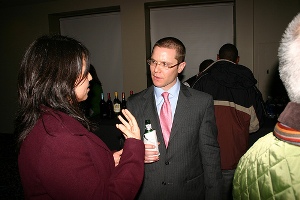 Ideally, assimilation is “a chance to have the best of all worlds,” Myers said. Immigrants infuse the country anew with industriousness, ingenuity, and creativity, he said. Alba agreed that the U.S. is the cultural leader of the world in part because of the creativity of its immigrants. The end result of assimilation should then be equal participation and political access, along with social and cultural preservation. And, Levitt noted, the native born have responsibilities as well to participate in political and civic life alongside immigrants and their children.
Ideally, assimilation is “a chance to have the best of all worlds,” Myers said. Immigrants infuse the country anew with industriousness, ingenuity, and creativity, he said. Alba agreed that the U.S. is the cultural leader of the world in part because of the creativity of its immigrants. The end result of assimilation should then be equal participation and political access, along with social and cultural preservation. And, Levitt noted, the native born have responsibilities as well to participate in political and civic life alongside immigrants and their children.
Assimilation may also mean something quite different as parts of the country become “majority minority.” It’s not an entirely new phenomenon. Alba noted that in the early 20th century, many major American cities were dominated by immigrants and their children. They made up 70% or more of cities like New York and Chicago, which developed a hybrid mainstream culture that spread to the rest of the country.
And it’s not only mainstream culture that shifts. As immigrants increase in number, intermarriage is going up among whites. “It’s a big development that people haven’t talked about or thought about,” Alba said.
—————————————————————————————————————
Watch a video of the second panel, “Is Assimilation Still a Bad Word?” here, or a brief clip here.
Read In The Green Room Q&As with the panelists at the following links:
Tomás Jiménez, Richard Alba, Peggy Levitt, Dowell Myers
—————————————————————————————————————
For more photos of the event, click here.
*Photos by Allison Glenn.




Send A Letter To the Editors